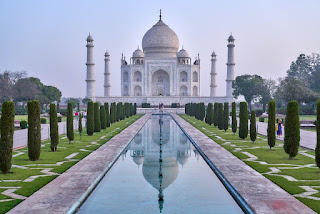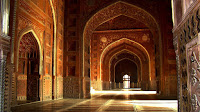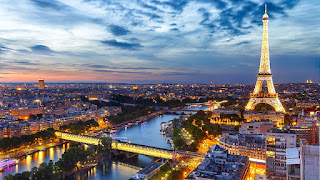Taj Mahal a Timeless Beauty and Architectural Mastery
In the heart of India, on the banks of the Yamuna River, stands an architectural masterpiece that transcends time and captivates the soul—the "Taj Mahal" Completed in 1653. A true masterpiece with every detail carrying a story from time past into our very own.
There are very few love stories that have transcended time; this one, however, tops the list as it does not just tell a story it shows every aspect of the story. The "Taj Mahal" was commissioned by the Mughal Emperor Shah Jahan in memory of his beloved wife "Mumtaz Mahal". The "Taj Mahal" is a tribute to the enduring power of love that has withstood the test of time. We now know how dear the wife of the Emperor was to him to have made him create such "an edifice" in her honor. True love is shown. Another aspect of this magnificent structure shows the creativity of the Mughal architecture, "the Taj Mahal's ivory-white facade and intricate details beckon visitors from around the world.
Mughal Architecture
Designed by the great architect Ustad Ahmad Lahori, the Taj Mahal seamlessly blends Persian, Islamic, and Indian architectural styles.
The Taj Mahal's gleaming white marble facade is a spectacle to behold as it transforms with every changing light. From the soft lights of dawn to sunset, each time creating an ethereal ambiance. The choice of white marble combined with precious and semi-precious stones amplifies this ethereal beauty.
Gardens
The Taj Mahal is embraced by meticulously manicured gardens, known as the Charbagh, on its three sides. The geometric layout of these gardens symbolizes the paradise described in Islamic literature. Walking through the pathways, lined with fountains and reflecting pools, provides a tranquil and contemplative experience.
The Taj Mahal is recognized as a UNESCO World Heritage Site, attracting millions of visitors yearly to witness its historical significance and architectural magnificence. Over the centuries, the Taj Mahal has faced environmental challenges, including air pollution and the impact of tourism. Various conservation efforts are in place to protect this cultural treasure, including restrictions on vehicular traffic around the monument and ongoing restoration projects.
The Taj Mahal, with its timeless beauty and poignant history, is a living testament to the enduring power of love and the genius of Mughal architecture.





Comments
Post a Comment